The Most Common Car Accident Injuries and What to Do After a Crash
A car accident is a traumatic experience, especially if you are injured. Most drivers report feeling dazed and disoriented after the sudden impact of a crash. As a result, you may not realize the extent of your injuries right away. However, what you do during those initial moments has long-term effects on your health and on the compensation you may be entitled to receive. Here is a guide to the most common car accident injuries and the steps drivers should take to protect their rights.
What Are the Most Common Car Accident Injuries in Michigan?
The injuries a driver or passenger sustains depend on several factors. These include the respective speed of each car, the location of the occupants and whether they were wearing seat belts, weight and size of the vehicles and where the impact occurred (front end, driver’s side, etc.).
For example, an SUV going 45 mph that crashes into the driver’s side of a smaller car will probably cause serious harm to the vehicle and its driver. However, a driver who is hit by a smaller car traveling 25 mph may also suffer severe injuries depending on the situation.
Here are some of the most common injuries resulting from car accidents:
Soft Tissue Injuries
These are injuries to the body’s connective tissue such as muscles, ligaments and tendons caused by the blunt trauma of a car crash. Examples include lacerations, which are visible, and contusions and sprains, which are internal.
Whiplash
Whiplash is a type of injury that can affect the neck, spine and brain. It often results from the forceful back-and-forth movement a driver might experience in a rear-end collision.
Cuts and Bruises
Drivers and passengers can be hurt by broken glass, seat belts and air bags or flying objects such as coffee mugs or backpacks.
Back and Neck Injuries
The powerful force of a car crash can cause a variety of spinal injuries that include herniated or ruptured discs, spinal fractures, compressed or displaced vertebrae and spinal cord injuries. The impact of an accident can exacerbate existing back and neck problems.
Brain Injuries
In a car accident, traumatic brain injuries may result from forceful impact to the head by the windshield, side windows or steering wheel. Additionally, traumatic brain injuries can occur inside the skull due to the strong forces involved in a car accident, even if an occupant does not strike their head.
One example is a subdural hematoma, a life-threatening condition where blood pools inside the skull and eventually puts pressure on the brain.
A concussion is another type of brain injury that occurs when the brain literally bounces around inside the skull after a hard impact. A concussion may cause internal injuries to the microscopic nerve fibers in the brain.
Chest Injuries
Drivers are most likely to sustain chest injuries because they are so close to the steering wheel. These injuries range from contusions or bruises, often caused by seat belts, to internal organ damage. Deployed airbags can also cause chest injuries.
Broken Ribs and Other Bones
Ribs break more easily than most other bones, even from moderate impact. Broken ribs are painful and typically require lengthy periods of rest in order to heal. Broken ribs can be especially serious because of the potential for a broken rib to puncture other organs like the lungs.
Arms and legs can break from a sudden impact that causes involuntary movement of these extremities. Knee injuries are also common when an occupant’s knees hit the dashboard or the seat in front of them. Because the degree of force is so strong when two cars collide, broken bones are common, including hips and shoulders.
Internal Bleeding
A high-impact crash can cause internal bleeding when organs such as the liver, kidneys or spleen are damaged. Open and closed head injuries may cause bleeding in the brain, which can lead to permanent brain damage.
Psychological/Emotional Harm
Car accident victims suffer more than physical injuries. They may also experience emotional or psychological conditions such as PTSD, anxiety about driving, depression or nightmares. Drivers may also have feelings of guilt or depression if others were injured or killed, even if the crash was not their fault.
What if My Injuries Don’t Show Up Immediately After a Car Accident?
Some injuries are not apparent for days, weeks, or months after an accident. The body reacts to the stress of a crash by producing adrenaline and endorphins, which can mask pain and other symptoms.
Head and organ injuries can have serious consequences, including death, if left untreated. Yet, many victims do not show outward signs of internal damage immediately after a crash. Therefore, accident victims who experience any impact to the head or body should seek immediate medical care, even if they are not experiencing symptoms.
In addition, the psychological effects of a car crash can worsen over time, especially when other physical injuries are also present. This is one of many reasons to hire an accident lawyer with the skill and experience to win the compensation you deserve for your losses, current and future.
What Should I Do Right After a Car Accident in Michigan?
- If you or someone else is injured, call 911 and request an ambulance
- Call the police, even if no one requires emergency medical care
- If possible, move your car to a safe nearby location, put on your emergency flashers and wait for the police to arrive
- Take photos of the scene, including all vehicles involved in the crash as well as the surrounding area, including road conditions, street signs and traffic signals
- Exchange contact and insurance information with the other driver(s)
- Obtain the names and contact information for witnesses
- If you did not receive emergency medical treatment at the scene or immediately after the crash, see a physician as soon as possible
- Contact a lawyer who specializes in car accident injuries
What Not to Do After a Car Accident in Michigan
- Do not leave the scene of the accident
- Do not discuss how the crash happened with the other driver(s) or their passengers
- Never admit fault
- Do not talk to an insurance adjuster or sign any papers
- If the other driver asks if are hurt, say you cannot determine the extent of your injuries until you are evaluated by a doctor
Why Is It Important to Hire a Michigan Car Accident Lawyer Right Away?
There are several reasons to contact an experienced attorney as soon as possible. If you fail to meet the Michigan statute of limitations for filing car accident claims, you could forfeit your right to compensation. The other driver’s insurance company may also pressure you to accept a quick – and usually lowball – settlement. In addition, your lawyer can help you collect the no-fault insurance benefits you’re entitled to for medical bills, lost wages and other accident-related expenses. Furthermore, studies show victims who hire accident lawyers have better financial outcomes than those who attempt to handle their own claims.
Recommended reading: What Evidence Do You Need to Win Your Michigan Car Accident Case?
Put Our Experienced Car Accident Lawyers to Work for You Today
If you or a loved one is injured in a car accident, we can help. Our knowledgeable legal team knows what it takes to win your case, and we have the expertise and resources to win the compensation you deserve.
Car accident law is complicated, but finding the right Michigan car accident lawyer is simple.
Get your case started today by clicking the button below to fill out a brief form or calling 1-800-CALL-SAM for a free, no-obligation remote consultation from the safety of your home.
HAVE YOU BEEN INJURED?
Get The Bernstein Advantage® today!
Free. Simple. Quick.


